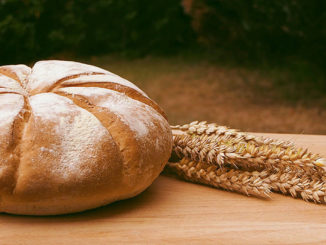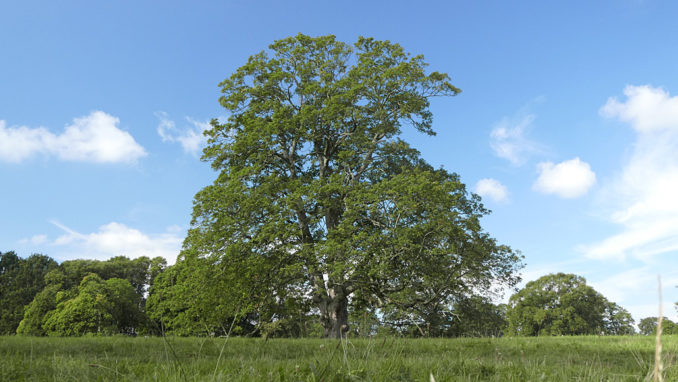
Mabon
The autumnal equinox is an important turning point in the year. The hours of day and night are balanced, indicating that the light half of the year is drawing to a close, heralding the return of darkness. Neolithic structures were arranged to alert the ancients when this time of the year had arrived, so recognising this event has been observed for a long, long time.
This ‘neo-pagan’ sabbat is often referred to as the ‘second harvest’ when berries and nuts would be gathered. Any extra sustenance that can be gathered before the onset of winter is considered a bonus, and rural folk will be well-practised at spending their time making jam and other preserves that can be stashed away for the cold months. However, most of the historical celebrations linked to this period are focused on the joy and relief at completion of the main crop harvest. It is essentially a time to enjoy a brief rest, safe in the knowledge that you have literally reaped what you had sown. Unless of course you’ve experienced terrible weather, in which case your entire settlement would be stressing out at the prospect of a winter with barely any food — which meant extreme hardship, tough choices, and possibly an existential crisis. In 1879 we suffered disastrous weather, and many crops were still in the fields, uncut, in November. It is little surprise that people needed gods that they could worship or implore to help them cope mentally with their harsh realities.
Curiously, the word ‘harvest’ comes from the Old English word ‘hærfest’ which referred to the period between August and November: it was simply one of the four seasons, which we now call autumn. Our current use of the word as a reference to gathering of crops was only incidental until around the 13th or 14th century.
Modern farming is a world away from what our ancestors had to endure. Hundreds of years ago, when the harvest began every able-bodied man, woman and child would be pressed into service, as labour shortages were a serious cause for concern. Indeed, what most now refer to as a ‘summer holiday’ for school children was originally a harvest holiday where schools closed purely because so many pupils were needed to help get the harvest in before the weather took a turn for the worse.
We have machinery to speed up the harvest, so we require far fewer people working in farming. Another modern boon is that we can easily transport food around the country, so a poor harvest in one area doesn’t spell disaster for those locals. All our modern developments have allowed society to increasingly drift away from the realities and hardships of farming, leading to many of the traditional celebrations and practices to become symbolic at best, or even more tragically, simply forgotten.
The customs and beliefs associated with the end of harvest celebrations varied hugely from region to region.
Even the name that was used varied, with the day sometimes being known as Harvest Tide, Harvest Home, or Second Harvest. Many of the rituals and traditions for the end of the harvest and the following feast are pre-Christian and can be traced back to commonly-held Saxon beliefs that a spirit resided in the last sheaf of grain (known as a ‘mell’ or ‘neck’) to be harvested.
It wasn’t unusual for the horse bringing the last cartload of corn to be decorated with garlands of flowers and colourful ribbons. The last patch of corn or wheat left standing in the field was known as the ‘mell’ or ‘neck’, and cutting this last sheaf ended the harvest, and meant everyone could relax and turn their minds to the celebratory feast.
Sometimes, this last patch of grain was beaten to the ground, to chase out the spirit. Some accounts say the last corn to be harvested was sacrificed along with a hare — although as time went by, model hares fashioned from straw were used instead. However, it was far more common to let the spirit be, and finish the harvest.
But it wasn’t as simple as just cutting it down. Either because of perceived bad luck, or to avoid angering the spirit, various methods were devised to cut the last sheaf anonymously. The simplest of these involved the reapers lining up and repeatedly throwing their sickles at the corn simultaneously, until the last of it was cut. This was also done in the Welsh borders, but with the added feature of tying the last of the corn into four bunches —representing the legs of a horse. Some regions had the reapers taking turns to be blindfolded, and would wander around the field, sweeping their scythe until the mell was cut.
Obviously, this sickle throwing or blindfolded scythe swinging could be time-consuming, but it would have been a fun way to draw everyone together for what would literally be the end of the harvest. Much ceremony was attached to ‘crying the neck’ in Devon and Cornwall, with the farmer who cut the last sheaf being held aloft. This ceremony is still practised by the Old Cornwall Society.
The last sheaf was almost always made into a symbolic corn dolly, which was kept safe above the hearth to protect the spirit, and often took place of honour at the banquet. Some regions felt they needed to drench the corn dolly in water as a rain charm, while it was very common for the seeds carried in the corn dolly to be sown the following spring to bless the new crop.
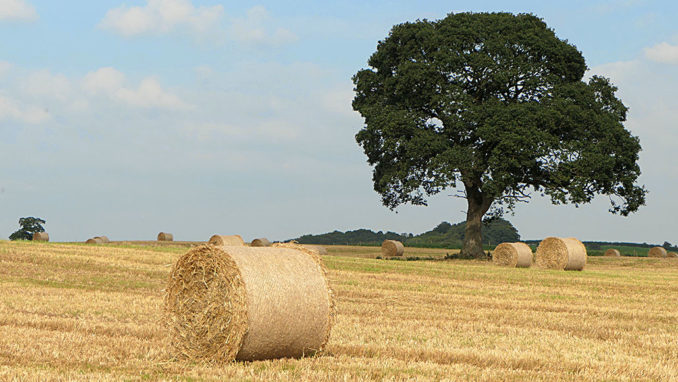
Naturally, there was a large element of competitiveness between neighbouring farms, and they would often race against each other. This was partly to avoid the bad luck associated with cutting the last sheaf of grain, and partly just so they could brag that they weren’t last to finish. The farmer and his workers would often loudly announce that they’d completed their harvest, though sometimes the message was communicated by throwing corn dollies into neighbouring farms in order to tease and boast.
Completing the harvest was a joyous occasion, and it was normal for the whole village to be decorated with boughs whilst everyone sang and danced. Up until the 20th Century, it was commonplace for farmers to celebrate the end of the harvest with a ‘harvest supper’ to which everyone who had helped bring in the harvest would be invited. Naturally, in days gone by, this would have been a huge event, but as mechanisation took off, and the number of workers required to assist with the harvest dwindled, the custom has largely faded away.
The idea of a harvest festival continued to be marked despite newer gods and religions becoming dominant, with perhaps the most globally recognised being the Thanksgiving held by the pilgrims in 1621.
Back in Britain, the church eventually adopted and adapted our older customs, with the Reverend Robert Hawker being the first to invite his parishioners to a thanksgiving service at his church in Morwenstow in Cornwall in 1843. They sang hymns to celebrate the harvest and decorated the church with home-grown produce. And a decade later, the Reverend Dr William Beal in Norfolk held a harvest festival in order to end what he considered were ‘disgraceful scenes’ at the end of the harvest, and he promoted ‘Harvest Homes’ in other nearby villages.
And while the idea of a harvest conjures up images of wheat and corn, many harvest festivals focus on fishing.
In Billingsgate, London, they hold the Harvest of the Sea Thanksgiving, where they decorate the church with fish and netting. Many towns and villages up and down the country which depended upon fishing celebrated in a similar way. In North Shields, the tradition sees the first salmon caught to be given to the vicar during the ‘Blessing of the Salmon Fishery’.
In many communities today, the closest brush to be had with a harvest celebration will be a church harvest festival. Children from schools up and down the country are pestered into fetching in a few tins or bottles to take into the local church for a special service. This is a pale imitation of what a harvest celebration used to be, and it has drifted even further from its roots by being used today to promote quite different issues, often with the food supplied by the children being donated to a local food bank or similar, or the celebration is used to raise awareness of international issues chiefly in developing countries which struggle to grow crops. On one hand, at least the occasion is marked, and at the harvest festivals my children have attended they have sung hymns about growing the crops and reaping the rewards. But on the other hand, what should be a time of simply appreciating the bounty of nature, is becoming increasingly politicised.
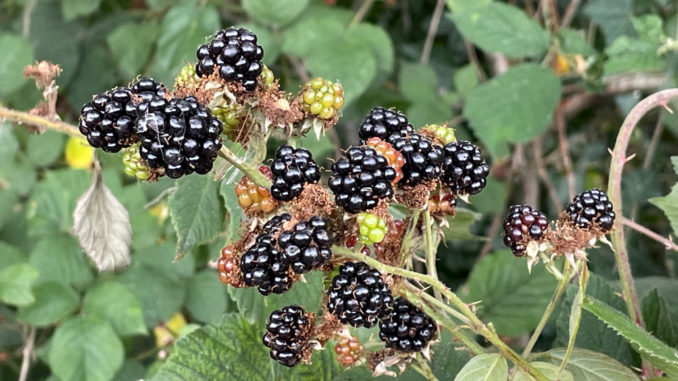
By now, you’re maybe starting to wonder where the name ‘Mabon’ comes from. What or who is Mabon? And what does he have to do with the harvest?
The name is taken from the character Mabon ap Modron, (meaning ‘son of the mother’ or ‘divine son’) in a Welsh legend, though he appears to have been freely adopted by the Romans too, as there are altars and carvings along Hadrian’s Wall for ‘Apollo Maponus’. Bear in mind that long ago ‘Wales’ in this sense wasn’t restricted to the current geographical region, but culturally speaking included or overlapped with large parts of the west coast of the British mainland, from the kingdom of Rheged in the north, down to ‘West Wales’ — now Devon and Cornwall — in the south.
The Romans had a knack for identifying local gods who served the same purpose as gods they were already familiar with, and which often shared the same roots. It may surprise you that Mabon has nothing to do with the harvest or corn at all. Like Apollo, he was a god of the sun, a hunter, and a musician. His story has clearly been adapted and rewritten by generation after generation as despite initially predating the Romans, his tales now involve him fighting alongside King Arthur — who didn’t make an appearance until after the Roman Empire was imploding and had abandoned these isles.
Anyway, Mabon is a minor character who features in the Mabinogion, which is a collection of Welsh tales from the Middle Ages. Initially recorded by monks, they remained obscure until being translated into English in 1849.
Mabon makes a minor appearance in the story The Dream of Rhonabwy, in which he is one of Arthur’s chief advisors and fights alongside him at the Battle of Badon. However, he plays a much bigger role in the story of Culhwch and Olwen. The story opens with a warrior, Cylidd Wledig, marrying a woman called Goleuddydd (meaning ‘bright day’). She fell pregnant but went insane prior to her son being born in a pigsty. He was named Culhwch — which means ‘pigsty’. Harsh, but fair, I suppose. Goleuddydd died soon afterwards, but young Culhwch was taken in and raised in secret by a swineherd.
In the intervening years, Cylidd defeats and kills King Doged, and claims his lands, his wife and his daughter.
When Cylidd’s new queen learns of Culhwch, she invites him to court, and suggests he should marry her daughter, to guarantee succession to the throne for both sides of the family. Culhwch doesn’t go for this, which rather offends the queen, leading her to curse him, meaning he can marry no one other than the mysterious Olwen. This might not sound too bad, but Olwen is the daughter of Ysbaddaden Pencawr, who is the mighty and fearsome king of the giants.
Culhwch became obsessed by tales of Olwen’s beauty and enlisted the aid of King Arthur, whose scouts scoured the lands for a year, but to no avail. So in the tried-and-tested tradition of “If a job’s worth doing…” Culhwch and Arthur invited a handful of other heroes to join them as they initiated their own search.
They came upon the house of a shepherd — whose wife was Culhwch’s aunt — and they were advised to abandon their quest as all men who sought Olwen were lost, never to be seen again. Not being a quitter, Culhwch managed to wheedle out of his hosts that Olwen visited every Saturday to wash her hair. He waited, they met, and they fell in love with each other.
Olwen warned Culhwch that her father would be resistant to the idea of their relationship, on account of him being fated to die when she marries. He was known to be in the habit of setting impossible tasks for suitors to complete in order to win his daughter’s hand in marriage. Undeterred, Culhwch and his band follow Olwen to her father’s castle, where they fight their way into the Giant’s hall. Understandably, Ysbaddaden is a bit peeved, there’s a bit of a scuffle in which Culhwch and his men outwit him, forcing him to reluctantly agree to allow the lovebirds to wed.
All Culhwch had to do was complete thirty-nine tasks. One of these tasks was to hunt Twrch Trwyth—who was an Irish king that had been transformed into a wild boar. To manage this, they needed the legendary dog Drudwyn, which was the only dog capable of sniffing out the boar.
Unfortunately, to locate this wonder dog, they needed Mabon, who was the only man capable of hunting it out. The final task was to cut the hair and beard of Ysbaddaden, the giant king himself.
In preparation for their confrontation with Twrch Trwyth, a special sword was needed to slay the boar, and so the band located the giant who possessed it, tricked him into handing it over for sharpening, and promptly beheaded him with his own weapon.
Next on their ‘to do’ list was to find Mabon, who had been imprisoned in a watery Gloucester dungeon. Mabon had been taken from his mother when he was only three days old, and no one knew if he was even still alive, much less where he was.
One of Culhwch and Arthur’s men could communicate with animals, and so they approached the oldest known creature, the Blackbird of Cilgwri, and asked about Mabon. The bird couldn’t help, but directed them to the even older Stag of Rhedynfre. The stag couldn’t help either, but directed them to the even older Owl of Cwm Gwlwyd. The owl couldn’t help either, but directed them to the even older Eagle of Gwernabwy. The eagle couldn’t help either, but directed them to the even older great Salmon of Llyn Llyw.
By this point, they must have been feeling like they were in a scene from Monty Python and the Holy Grail, but thankfully, the salmon was able to help. He’d heard Mabon’s lamentations as he swam past the walls of Caer Loyw, and knew that Mabon would not be given up freely.
A simple plan was arrived at, and flawlessly executed. The castle was assaulted as one of their band rode on the back of the great Salmon, broke into Mabon’s underground cell through the wall, freed him, and then fled.
As the tale progresses, Mabon does indeed hunt down Twrch Trwyth, and drives him into the River Severn. Before the boar was washed out to sea and drowned, Mabon snatched from it a comb, razor, and shears. Soon after, Arthur himself kills a black witch, and takes her blood to soften the Giant King’s hair and beard.
Armed with this unique collection of grooming paraphernalia, Culhwch does indeed manage to cut Ysbaddaden’s hair and give him a close shave: after which, the King of the Giants dies, allowing Culhwch and Olwen to marry.
What’s interesting about this tale is that it supports Mabon as fulfilling the same role as Apollo Maponus, as they are both hunters. Also, he is clearly a sun god, representing the sun reborn after the winter solstice. He was stolen from his mother three days after birth, which demonstrates knowledge of the three days the sun ‘stands still’ at the winter solstice.
Furthermore, the underground imprisonment of the god equates to the sun in the underworld for the dark half of the year, before being ‘released’ again. This is a feature of numerous cultures to explain the shorter, darker days of winter, and the subsequent release by heroes. This is seen in interpretations of the tales of Jason and the Argonauts rescuing the Golden Fleece, and the Japanese sun goddess Amaterasu, who hid in a cave, to name but two.
In a different Arthurian tale, there is another character — ‘Mabon fab Mellt’, who is ‘Mabon, son of Lightening’. In other mythologies, the sun god is often the son of the sky and storm god, just like Zeus and Apollo.
Additionally in the Mabinogion tale, Mabon defeats the boar, which is a common symbol of winter and the underworld.
Put all this together, and Mabon is clearly a sun god, reborn at the winter solstice. He doesn’t appear to have anything to do with the harvest at all. So why on earth has the autumn equinox referred to by his name?
The answer lies with the American writer and witch, Aiden Kelly. A short — and perhaps unfavourable — account would be that in 1973, he was putting together a ‘pagan calendar’, and in the absence of a traditional name for the autumnal equinox, he picked the name Mabon, and it stuck.
But there is a bit more to it than that. He recognised that ancient monuments such as Stonehenge had stones aligned to mark the equinox, so it must have been observed. Rightly or wrongly, he identified a pattern of myths associating the autumn equinox with the rescue of youngsters from death or imprisonment, dating to the same era as the construction of Stonehenge. One in particular was the Eleusinian Mysteries of Classical Greece, which tells of Demeter and the rescue of Persephone (or Kore) from Pluto’s clutches in the underworld.
When Kelly was putting together his pagan calendar he really wanted an ‘authentic’ name for the equinox. Under the Saxon calendar, the equinox could fall in one of two months, and whichever one it did land in was called ‘Halegmonat’, or ‘Holy Month’. This suggested to him that the equinox was important, but somehow it didn’t have the title it deserved. Wondering if there was a native myth equivalent to other classical myths associated with the equinox, he came across that of Mabon, which involved the rescue of a youth from the underworld. He is adamant that it wasn’t an arbitrary choice. He forwarded his suggestions to the publication, Green Egg, and they were accepted into the pagan vocabulary. Ironically though, his own tradition — the New Reformed Orthodox Order of the Golden Dawn — chose not to use his suggestion, and instead went with ‘Rites of Eleusis’.
For what it’s worth, I think his heart was in the right place. However, there is little to no evidence that either the Anglo Saxons or the Welsh celebrated this equinox. Celebrations seemed to focus more on the completion of the harvest. Also, Mabon of the Mabinogion is quite a minor character from an obscure set of myths, and all evidence points to him being a sun god, and nothing to do with the harvest.
As you might expect, you don’t have to dig deep before you stumble onto quite passionate and forceful rejections of the use of Mabon to refer to the autumn equinox. Memes suggest the use of ‘Mabon’ is not universally accepted.
The Welsh are staunchly proud of their history, language and culture. The idea that the names of their mythological or historical figures can be lifted because it sounds cooler than ‘autumn equinox’ is seen by many as disrespectful and provocative, with accusations of ‘cultural appropriation’. Some feel that their god Mabon has been taken out of context, and shoe-horned into a modern, fake festival. And who can blame them? It is one thing to keep an ancient tradition and mythology alive, but another entirely to borrow an existing brand name and slap it on your own — different — product. As one Welshman phrased it at the end of his contribution to a discussion: “Sorry if I come across as arsey. This really boils my piss.” Of course, there’s probably a good number of Welsh folk who are quite ambivalent about the whole thing.
So, relax and appreciate a good harvest. Enjoy ‘reaping what you have sown’. Enjoy your home-made jams made from hand-picked hedge treasure. Just be careful about who you wish ‘Happy Mabon’ to.
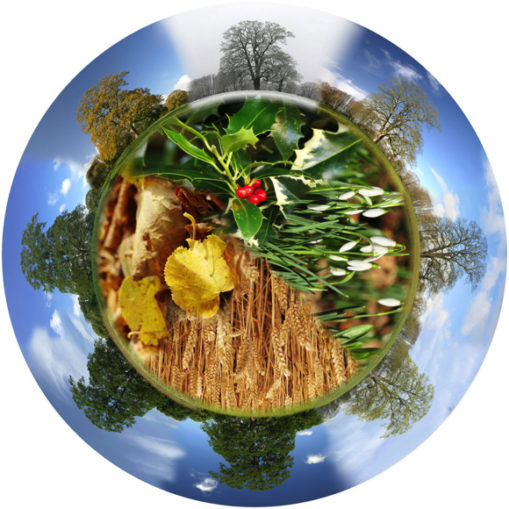
This concludes my series on the eight sabbats of the ‘Wheel of the Year’. In six weeks, we find ourselves back with a new beginning at Samhain, when the eternal cycle will begin a fresh revolution. I have enjoyed organising my thoughts and scattered fragments of knowledge, as well as digging deeper to either fill in any gaps, or to make sense of seemingly contradictory tales or traditions. I have also appreciated any comments where readers have shared their own regional or historical traditions which they remember or had heard about.
In the process of writing these articles I have amassed copious amounts of information on related topics — which deserved more space than these articles would allow — so expect to see another piece or two delving into related mythologies like the Green Man, or the Holly King and the Ivy King.
Thank you to Swiss Bob for publishing these, and a sincere thank you to everyone who has read and appreciated them.
© Carvetii 2021
The Goodnight Vienna Audio file
Audio Player



